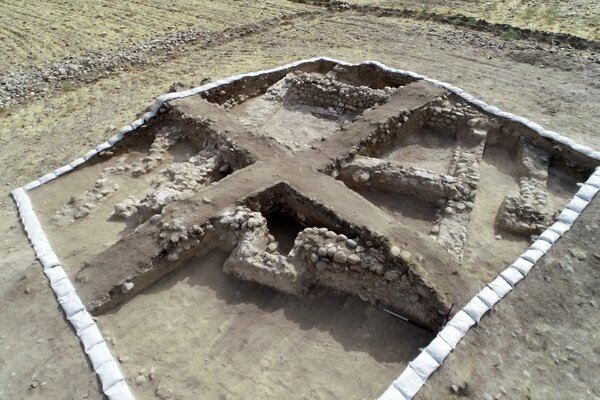Sassanid/Islamic site severely damaged by agricultural work

TEHRAN – An ancient site at the basin of the newly-constructed Chamshir Dam in southwest Iran has severely been destroyed by local farmers, an Iranian archaeologist has said.
About 70 percent of the archaeological site has been plowed and leveled by farmers, resulting in demolishing many relics buried in this area, ILNA quoted archaeologist Saeid Amir-Hajilu as saying on Monday.
“Archaeological excavations have yielded poor results so far due to an extensive level of destruction by farmers.”
“However, we have discovered a wide range of relics including pottery, glass, stone beads, and stone mortars at the site”, he explained.
He also noted that architectural remnants of the Sassanids, early and middle Islamic eras have been identified at the site.
Sassanid architecture is characterized by the use of stone rubble and plaster mortar, whereas the early Islamic architecture found in this area lacks the quality of Sassanid architecture, he added.
“The architecture of the third period is very poor and lacked order and quality, and was probably developed by nomadic tribes that settled in this area during the middle Islamic centuries,” he mentioned.
As a result of the overlap of architectures from different periods, it can be said that in the early Islamic period, new walls were built on the walls of the Sassanid period without affecting the rest of the plan, he explained.
Earlier this week, Amir-Hajilu announced that whenever the nearby dam’s water flows, the entire historical area is at risk of sinking, which raised some worries among cultural heritage aficionados.
However, he explained that all findings of the survey were carefully documented.
It appears that human societies in this area began at least during the Sassanid era (224–651), considering the presence of two ossuaries on the rocks overlooking this historical site, the types of pottery, and the architectural style of some of the walls, he added.
Furthermore, the natural characteristics of the region and its proximity to the Zohreh River led to the establishment and settlement of this area for over a thousand years, until the Islamic era, he mentioned.
The Sassanid age is of very high importance in the history of Iran. Under Sassanids, Persian architecture in addition to arts experienced a general renaissance. Architecture often took grandiose proportions such as palaces at Ctesiphon, Firuzabad, and Sarvestan which are amongst the highlights of the ensemble.
Sassanid archaeological designs typically represent a highly efficient system of land use and strategic utilization of natural topography in the creation of the earliest cultural centers of the Sassanid civilization.
ABU/AFM
Leave a Comment